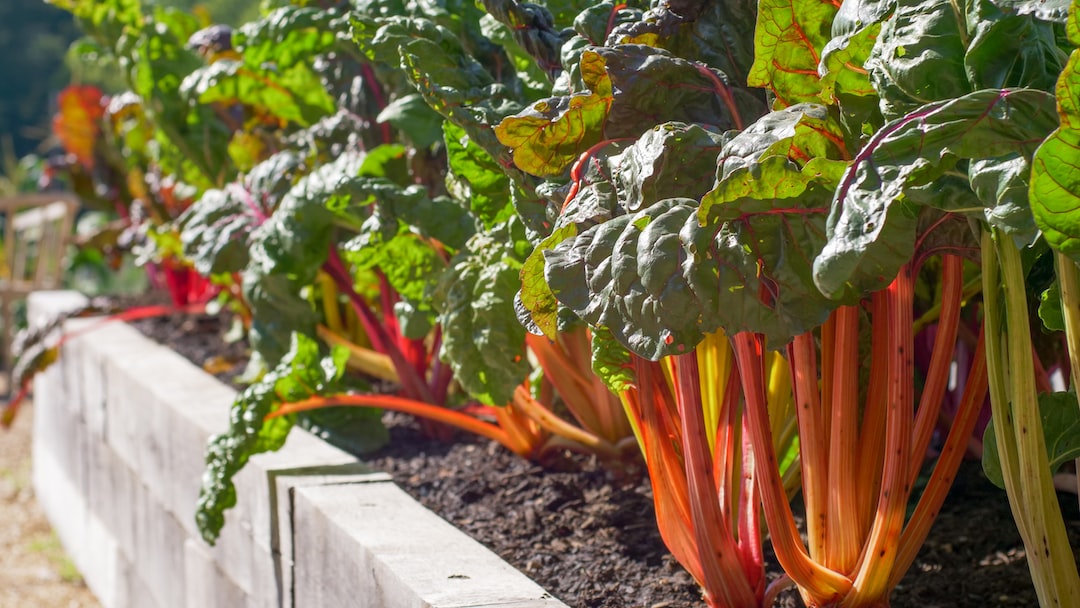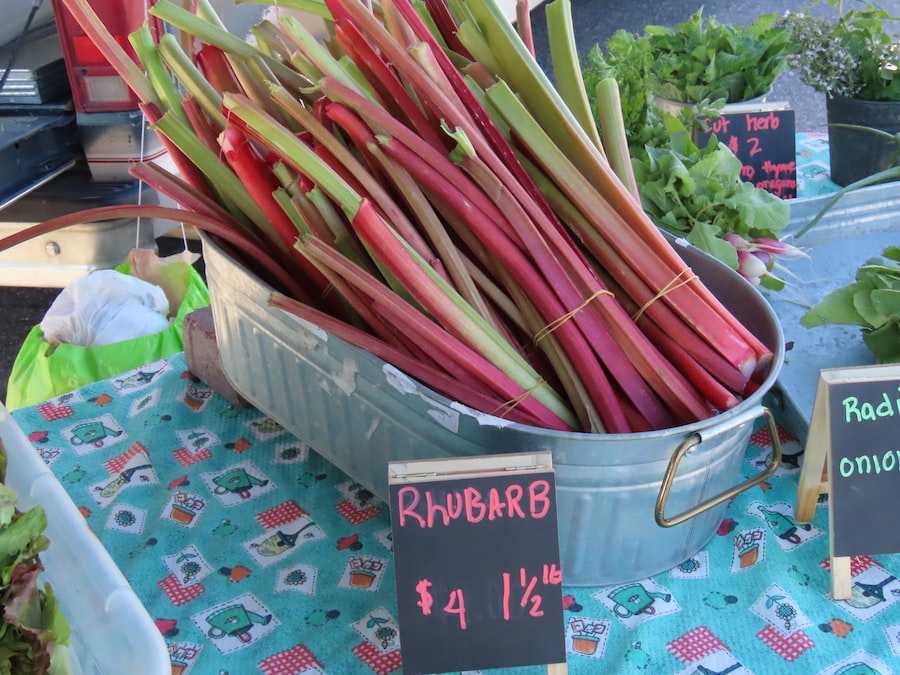Ready to Harvest: How to Tell if Your Rhubarb is Ripe

Rhubarb is a versatile and delicious plant that brings joy to both gardeners and cooks alike. Its vibrant red stalks and tart flavor make it a favorite ingredient in pies, crumbles, and other desserts. But the joy of rhubarb goes beyond its culinary uses. The process of growing rhubarb from a small plant to a bountiful harvest is a rewarding experience that allows gardeners to connect with nature and enjoy the fruits of their labor.
Key Takeaways
- Rhubarb is a joy to grow and can be harvested for many years.
- Timing is key when it comes to harvesting rhubarb, and the color and touch tests can help determine ripeness.
- The pull test is the most reliable way to know when to harvest stalks.
- Proper harvesting techniques involve cutting stalks at the base and leaving some behind for the plant to continue growing.
- Post-harvest care involves removing leaves and storing stalks in the fridge, and common mistakes to avoid include harvesting too early or too late.
Understanding Rhubarb Growth: A Quick Overview
Rhubarb is a perennial plant, which means it will come back year after year if properly cared for. It thrives in cool climates and requires well-drained soil with plenty of organic matter. Before planting rhubarb, it’s important to prepare the soil by adding compost or well-rotted manure to improve its fertility.
Once planted, rhubarb requires regular watering to keep the soil moist but not waterlogged. Overwatering can lead to root rot, so it’s important to strike a balance. Mulching around the base of the plant can help retain moisture and suppress weeds.
Timing is Key: When to Expect Your Rhubarb to be Ready
Rhubarb is not a plant that provides instant gratification. It takes time for the plant to establish itself and produce a harvestable crop. Typically, rhubarb plants are ready for their first harvest two to three years after planting.
The timeline for rhubarb growth can vary depending on factors such as climate, soil conditions, and the specific variety of rhubarb being grown. In general, though, gardeners can expect to see their rhubarb plants start to produce stalks in early spring. These stalks will continue to grow throughout the season, with the peak harvest time usually occurring in late spring or early summer.
The Color Test: Checking for Ripeness with Hue
| Color | Ripeness | Notes |
|---|---|---|
| Green | Unripe | Firm, sour taste |
| Yellow-Green | Almost ripe | Softening, slightly sweet taste |
| Yellow | Ripe | Soft, sweet taste |
| Yellow-Brown | Overripe | Mushy, very sweet taste |
| Brown | Decaying | Very soft, unpleasant taste |
One of the easiest ways to determine if rhubarb is ripe and ready to harvest is by looking at its color. The ideal shade of red or pink will vary depending on the variety of rhubarb being grown, but in general, you want to look for stalks that are a deep, vibrant color.
Avoid harvesting rhubarb stalks that are still green, as they are not fully mature and may not have developed their characteristic tart flavor. On the other hand, stalks that are overly dark or have a brownish hue may be overripe and have a mushy texture.
The Touch Test: Feeling for Firmness and Texture
In addition to color, the firmness and texture of rhubarb stalks can also indicate ripeness. When gently squeezing a stalk between your fingers, it should feel firm and crisp. If the stalk feels soft or mushy, it is likely overripe and past its prime.
Texture is also important when it comes to rhubarb. The stalks should have a slight crunch when bitten into, indicating that they are fresh and full of flavor. If the stalks have a stringy or fibrous texture, they may be past their prime and not as enjoyable to eat.
The Pull Test: Knowing When to Harvest Stalks

Another method for determining if rhubarb stalks are ready to be harvested is by using the “pull test.” To do this, simply grasp the base of a stalk near the soil line and give it a gentle tug. If the stalk easily separates from the plant with a slight resistance, it is ready to be harvested.
It’s important not to pull too hard when performing the pull test, as this can damage the plant and reduce future yields. If a stalk does not come away from the plant easily, it is best to leave it and wait a little longer before attempting to harvest again.
Proper Harvesting Techniques: How to Cut Rhubarb Stalks
When it comes time to harvest rhubarb, it’s important to use proper techniques to ensure the health of the plant and maximize future yields. To harvest rhubarb stalks, use a sharp knife or garden shears to cut them off at the base, as close to the soil line as possible.
It’s important to leave some stalks on the plant when harvesting, as this will allow the plant to continue growing and producing more stalks throughout the season. A general rule of thumb is to leave at least two-thirds of the stalks on the plant when harvesting.
Post-Harvest Care: Taking Care of Your Rhubarb Plant
After harvesting rhubarb, it’s important to provide proper care to ensure the health and longevity of the plant. One of the most important aspects of post-harvest care is watering. Rhubarb plants require regular watering, especially during dry periods, to keep the soil moist and promote healthy growth.
Fertilization is also important for rhubarb plants. Applying a balanced fertilizer in early spring and again in mid-summer can help provide the necessary nutrients for optimal growth. It’s important to follow the manufacturer’s instructions when applying fertilizer and avoid over-fertilizing, as this can lead to excessive leaf growth at the expense of stalk production.
Common Mistakes to Avoid: Pitfalls of Harvesting Too Early or Too Late
One common mistake that gardeners make when harvesting rhubarb is harvesting too early. It can be tempting to start picking stalks as soon as they appear, but this can weaken the plant and reduce future yields. It’s best to wait until the stalks are fully mature and have reached their ideal color before harvesting.
On the other hand, harvesting rhubarb too late in the season can also be a mistake. As the season progresses, the stalks can become tough and stringy, making them less enjoyable to eat. It’s important to keep an eye on the plants and harvest the stalks when they are at their peak.
Delicious Recipes to Try: Making the Most of Your Fresh Rhubarb Harvest
Once you’ve harvested your rhubarb, it’s time to put it to good use in the kitchen. Rhubarb is a versatile ingredient that can be used in a variety of sweet and savory dishes. Here are a few recipe ideas to get you started:
1. Rhubarb Pie: A classic dessert that showcases the tart flavor of rhubarb. Simply combine chopped rhubarb with sugar, flour, and a pinch of cinnamon, then pour into a prepared pie crust and bake until golden brown.
2. Rhubarb Crumble: Another delicious dessert option, rhubarb crumble combines stewed rhubarb with a buttery crumb topping. Serve warm with a scoop of vanilla ice cream for a truly indulgent treat.
3. Rhubarb Chutney: For a savory twist on rhubarb, try making a rhubarb chutney. Combine chopped rhubarb with onions, vinegar, sugar, and spices like ginger and cinnamon. Simmer until thickened and serve alongside grilled meats or cheese.
These are just a few ideas to get you started, but the possibilities are endless when it comes to cooking with fresh rhubarb. Whether you prefer sweet or savory dishes, there’s sure to be a recipe that will make the most of your fresh rhubarb harvest.



